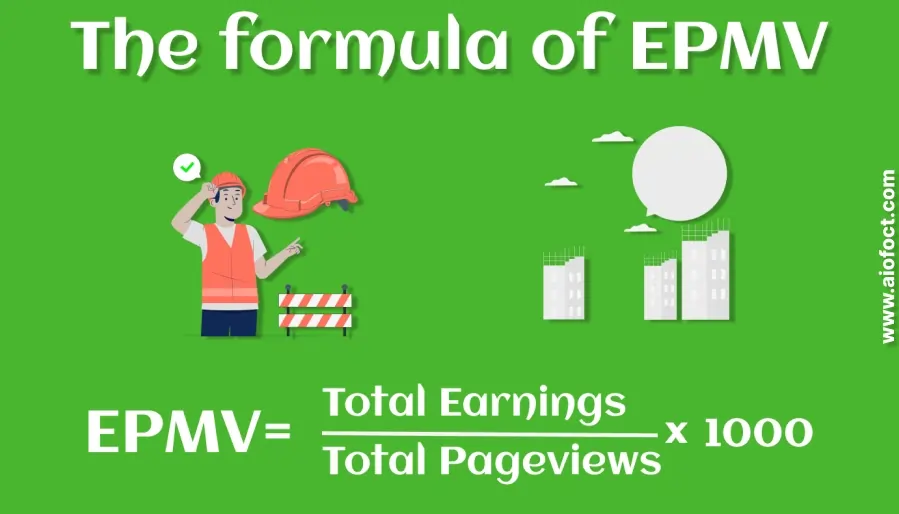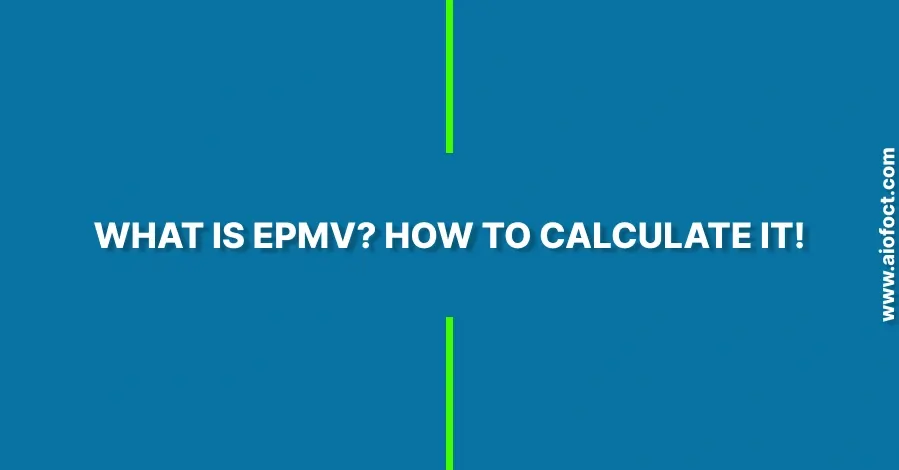
INTRODUCTION
Hello everyone, One of the concepts that’s gaining a lot of partners in the online publishing world right now, is EPMV or earnings per thousand visitors. This idea has been around for a long time in the online social media industries.
WHAT IS EPMV?
Actually EPMV stands for(Earnings Per Thousand Visitors) as earnings per thousand visitors reach your site in a specific time frame.In simple words, this is a metric that measures each or every 1000 visitors reaching your entire website and it’s not just a certain page or your Ad units.
My Depth Finding Study Of EPMV!
EPMV is a way of looking at the total amount of revenue that a user generates per session. This is of particular interest to digital publishers because EPMV can provide a true north with all the different changes in traffic, seasonality ad rates, and all the other variables that exist on a digital property.
WHAT WILL EPMV DO FOR YOUR DIAMOND WEBSITE?
EPMV can give you some direction as to whether or not you’re actually earning more per visitor overall than you were before. Other metrics like CPMs, RPMs, eCPMs, and all other forms of measuring revenue per ad or per page actually can be misleading to digital publishers. For example, a publisher could have higher RPMs and be making less revenue overall.
They could also be making higher CPMs, but making less revenue overall as well. This is a concept that is hard for publishers to understand sometimes as they’ve been optimizing for things like CPMs for a long time.
I’ll give you a good example of why it does not work. Take any page on your site, and if you look at all the CPMs and then remove the lowest performing ad, what you’re going to find is that CPMs overall go up, but total revenue goes down. The same can be said for RPMs and eCPMs. As you remove these different things, you have to take into account the user’s experience and the overall journey of the user. This is what Epmv does.
A GOOD EXAMPLE OF EPMV!
Ok, let me give you an amazing example of this. Let’s imagine you have a website about gold. On that site. You have two different pages. You have one page about the largest gold ever sold, and then you have another page about selecting the best gold ring. Now, the Rpm on that first page about the biggest gold ever may be much larger than the page that’s actually about selecting a gold ring.
However, the visitors that come to that page about the biggest gold might bounce on average because maybe they don’t see a reason to visit other pages. Who knows? But they will not visit more pages on the second page about selecting a gold ring.
LET US DRIVE IN THAT
There may be links or journeys inside of that article that take them to subsequent pages, causing the visitors to have greater page views. So even though that landing page may generate less revenue than the page about the biggest gold ring ever overall, the users that land on that page actually generate more revenue overall because their sessions include additional page views.
Epmv accounts for these additional page views. So when you’re accounting for the amount of revenue generated from things like Ads, you must take into account user experience. If you land on a page and the Ads are forcing someone to leave before their actual session would have normally ended.
You are actually leaving plenty of money on the table. This is why publishers are interested in EPMV. EPMV helps them account for the fact that some users actually generate more revenue than others because of the length of their session.
EPMB allows you to account for this, while RPMs and CPMs only look at the amount of revenue that you’re being paid for Ads. The publishers are looking for a more good route of measuring the revenue and a more thorough way that takes into account things like user experience.
And that’s why Epmv is gaining in popularity right now in the digital publishing world.
HOW TO CALCULATE EPMV?
Anyway if you would like to calculate EMPV, kindly follow the steps below which we mentioned:
1. To find your total earnings: Which is the total earnings generated by your website within a specific time period.
2. Count your Ad Impressions: To Find the total number of ad impressions between your same time period.
3. Calculate EPMV: Divide your total earnings by the number of ad impressions and multiply by 1000.
The common calculation is:

For a simple example, if your website pages are earned like $1,000 from 100,000 pageviews, the calculation would be:

This calculation may be calculated as the earnings per 1000 page views, and this provides how much revenue your website generates for every thousand ad impressions. And this way you can monitor EMPV may help you to optimize your ad strategy for maximum profitability with your niche.
HOW TO FIND YOUR EPMV WITH YOUR EZOIC ACCOUNT?
Anyway you have already a Ezoic member, login to your Ezoic account:

Since you can find the top bar below, there are around 8 options available. So just a quick click on the analytics option. Wait a while, it will redirect a new tab as below:

On the bottom of the tab, there is a table of data. In there you can find your EPMV report. This way you may know how you can find your EPMV, Revenue and more.
PROS AND CONS OF EPMV
As per my last knowledge in December 2023. “Epmv” will refer to different ideas in various contexts. However, one moral explanation would be “Earnings Per Thousand Views” in the context of online monetization. If it is not a certain EPMV you are referring to, so kindly provide more context for a more accurate response.
Assuming you are referring to “Earnings Per Thousand Views,” here are some general pros and cons:
PROS OF EPMV
1.Revenue Potential: EPMV is an amazing key to unlock the creators and publishers directly generating revenue for a certain page views. Higher EPMV means! It is getting unpredictable potential Revenue
.
2.Monetization Efficiency: It helps to scale monetization revenues. And what is EPMV intended to make many more revenues themselves and generate reasonable income from the targeted audience.
3.Optimization Guidance: By analyzing EPMV, content creators and advertisers can identify which content or advertising strategies are more successful in generating revenue
4. Benchmarking: EPMV can be used as a benchmark for comparing the performance of different content, platforms, or campaigns. It will help identify your areas for improvement.
Cons Of EPMV
1. Fluctuations: EPMV can be subject to your niche getting old, depending on whether the trend may lower your revenue will be less threshold.
2. Dependency on Advertisers: EPMV is heavily influenced by the rates advertisers are willing to pay. So any economic changes in advertising budgets can negatively impact EPMV.
3. View Quality vs. Quantity: EPMV doesn’t consider low rating or high rating views. So each 1000 views on your page’s conclusion of quality are not analyzed, this may reflect the negative impact.
4. Limited Scope: EPMV is just a metric Instrument. So consider with other performance instruments. Should not depend only on EPMV, this may avoid advertising success.
Note*
So be aware that EPMV may change depending on other business or business industries. So performance wise you should consider it.
CONCLUSION
Now, EPMV (earnings per 1000 views) is given as an important metric for evaluating the revenue potential and effectiveness of monetization strategies for content creators and publishers. Each impressions while giving scale of valuable internal view, that considering the conclusion or advertising performance may gain a complete awareness of with other metrics of EPMV navigating a most relevant action.

